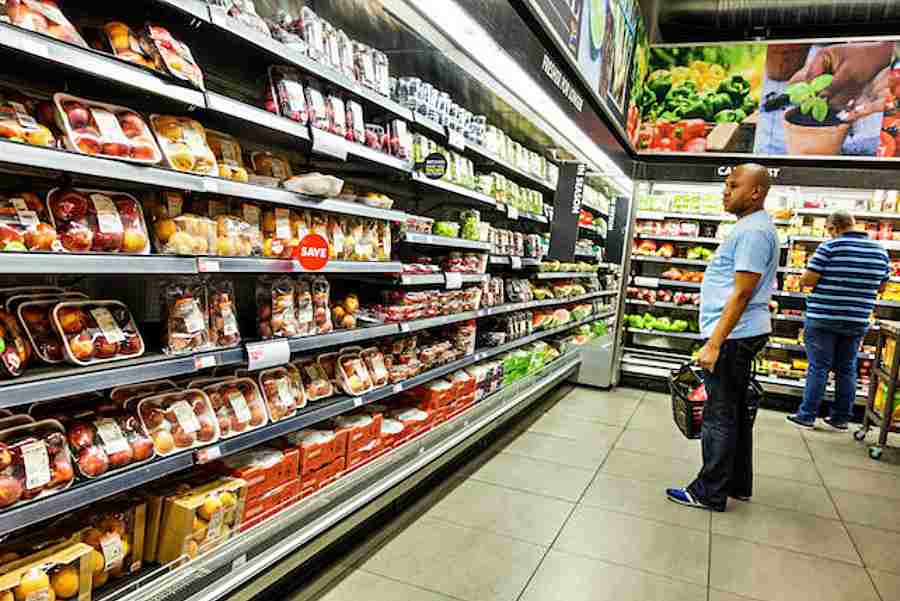The average South African household is consuming more goods and services, and is still spending most of its money on housing, food and transport.
That is according to Statistics South Africa’s newly published changes to the average South African household’s Consumer Price Index (CPI) basket of goods and the new weights for the CPI.
The weights indicate which items South African households spend more money on, while the CPI basket of goods indicate which products most South Africans are buying – an indicator of the cost of living.
“In the most recent update… the CPI basket will now contain 415 items, up from 404 in 2016. A total of 14 new items were added, while two items were removed from the basket. Some products were either split into two or combined into one,” the data collection agency said.
Stats SA explained that the revisions were based on information collected as at December 2019 and the list was determined from “detailed sales information” from South African retailers.
The statistics body said the reference period of the weights is 2019, to reflect a normal period not including the economic devastation caused by COVID-19.
“As the weights remain fixed for a number of years into the future, the CPI manual guides that the weights should reflect a ‘normal’ consumption period and to adopt weights that are not likely to change much in the future,” Stats SA said.
The South African shopping bag
According to Stats SA, more products have been added to the consumer basket of goods to reflect a change in South African spending habits, while others – which may have become obsolete due to technological changes – have fallen way.
“In this update, DVD players and satellite dishes are out of the basket, while sound bars and speakers are included. The item ‘pre-recorded CDs’ was renamed ‘CDs, subscription and streaming music’ to reflect the growth in consumer appetite for streaming music services.
“A few tweaks were also made to items already in the basket. With growth in the use of data services, the item ‘internet usage’ was split into wired (e.g. fibre) and wireless (e.g. cellular) forms of access. Energy saving and traditional lightbulbs, previously listed as separate items, were amalgamated into one product following the near disappearance of incandescent bulbs,” Stats SA said.
In food, beverages (both alcoholic and non-alcoholic) and household items, a few inclusions have also been made to reflect consumer spending habits.
“Gin is the only new inclusion in the alcoholic beverages category, reflecting its growing popularity among consumers in South Africa. Cappuccino sachets have also entered the basket, as well as dairy/fruit juice blends, samp, pureed baby food and jam.
“Personal care products such as razors, wipes and make-up (foundation) made the grade as well, together with household items such as floor and wall tiles and fabric softener,” Stats SA said.
CPI weights
Stats SA revealed that the calculation of the CPI weights, which is what proportion of household income is spent on what items, were adjusted using household spending growth based on national accounts information.
“This is the first time that Stats SA has fully relied on national accounts data for recalibrating the CPI weights. In line with international standards, the weights are usually based on spending data from a household expenditure survey, such as the Income and Expenditure Survey and the Living Conditions Survey (LCS) that informed the last update in 2017.
“Due to budget cuts, Stats SA was not allocated funding to conduct a household expenditure survey since the 2014/15 LCS. However, the sources and methods used to update the basket and weights are nevertheless consistent with international good practice,” said Stats SA.
The new weights reflect that South Africans still consistently spend the bulk of their income on housing, transport and food.
The least proportion of income is spent on health, communication and education.
“Alcoholic beverages and tobacco saw the largest weight increase, rising by 0.44 of a percentage point to 6.26%. The weight for miscellaneous goods and services experienced the biggest drop, decreasing by 0.24 of a percentage point to 14.81%,” Stats SA said.
The statistics body is expected to announce the consumer price index – the cost of living – for January on February 16.
“The… basket is the bedrock from which the consumer price index is calculated. Prices for all items in the basket are collected on a regular basis. Stats SA measures the changes in these prices to calculate the inflation rate, or the change in the cost of living,” Stats SA said.
– SAnews.gov.za
_____________________________________________________________________________________________________________
FOLLOW INDEPENDENT PRESS:
TWITTER (CLICK HERE)
https://twitter.com/IpIndependent
FACEBOOK (CLICK HERE)
https://web.facebook.com/ipindependent
Think your friends would be interested? Share this story!




